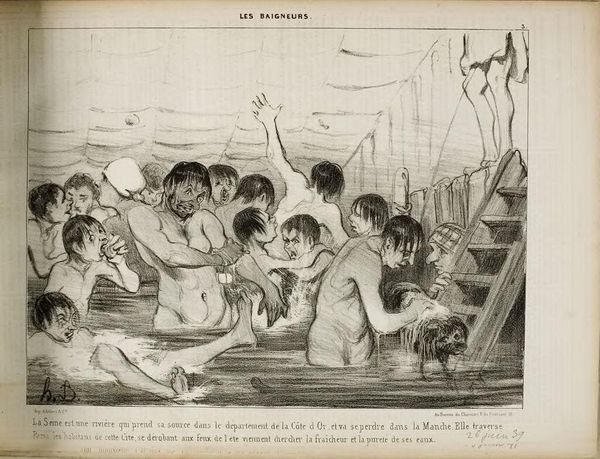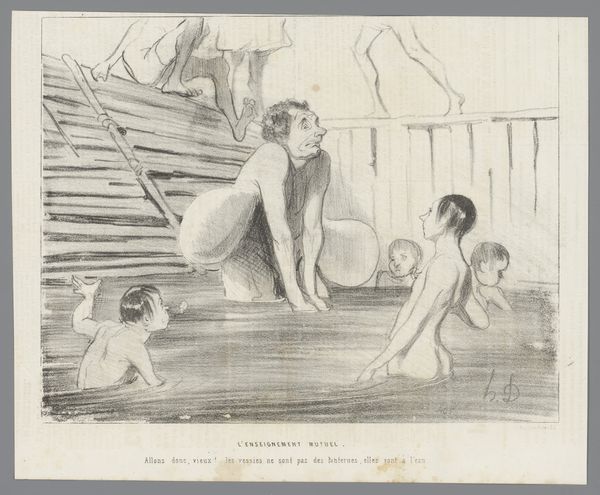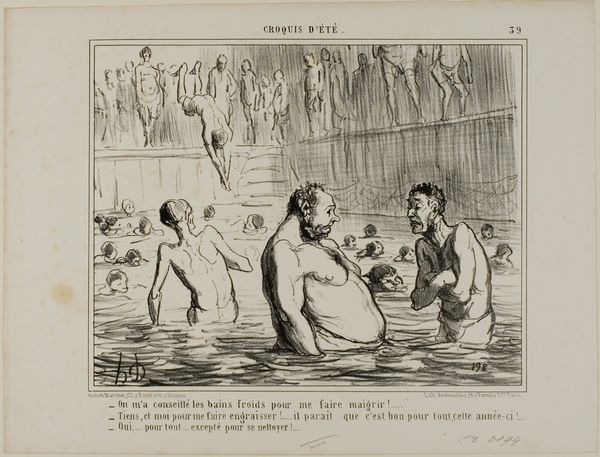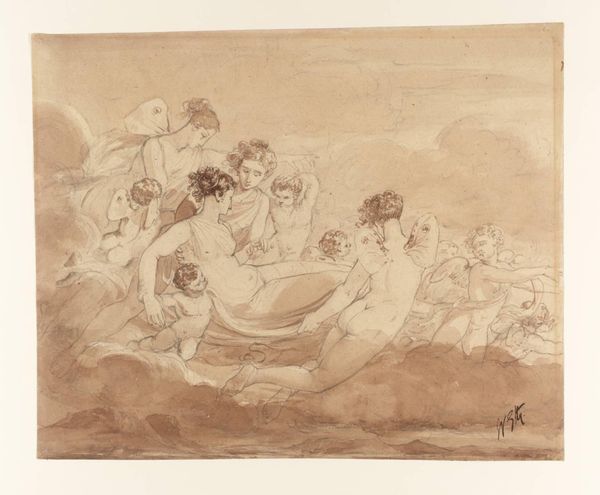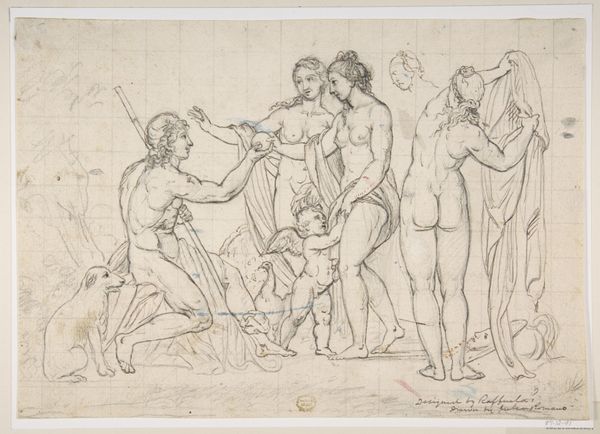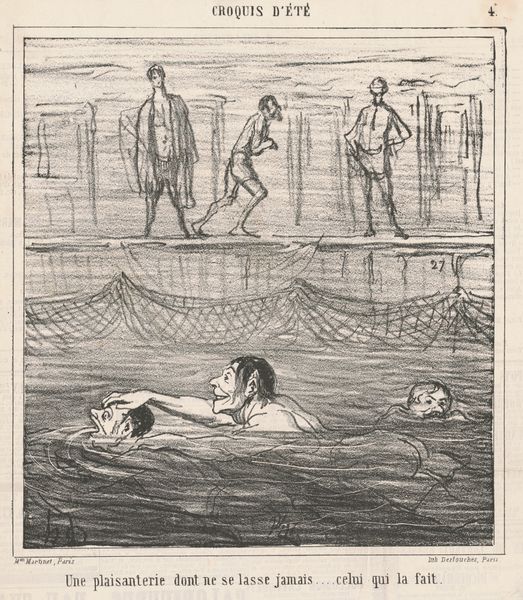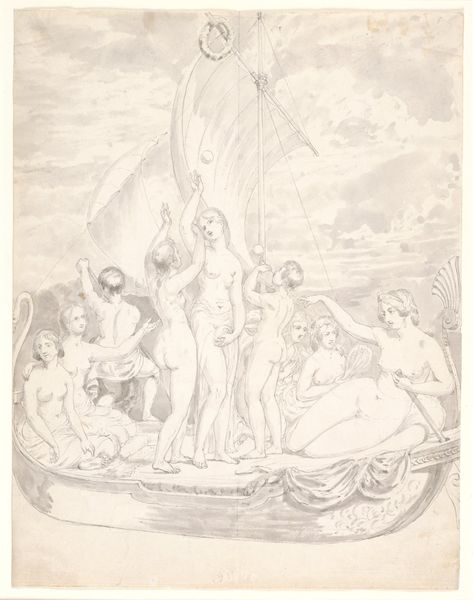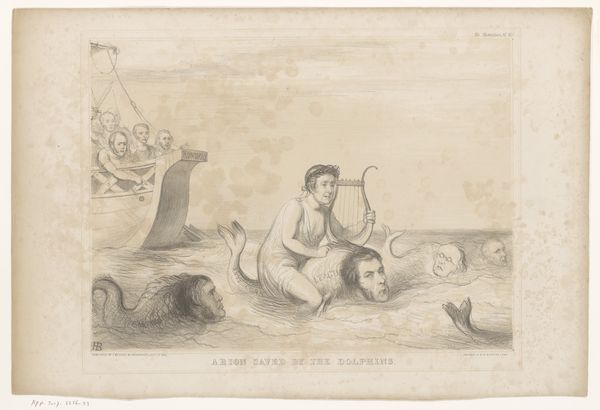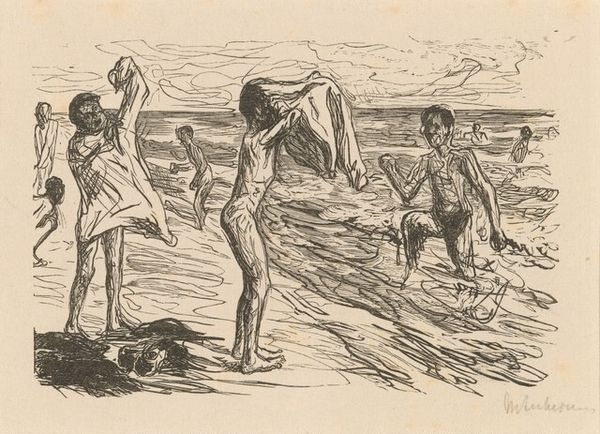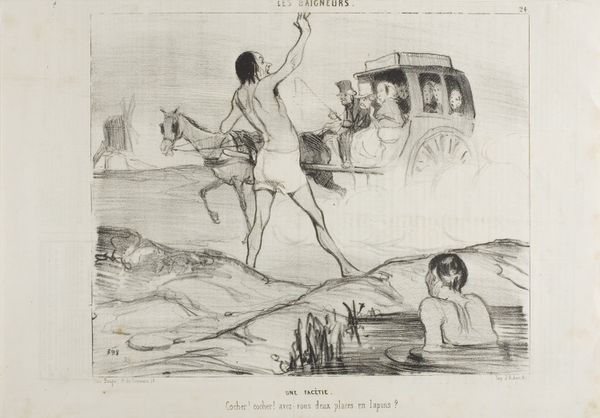
The source of the Seine is the Cote d'Or, and it empties into the Channel. On its way it traverses Paris where the inhabitants escape the summer's heat and try to find freshness and purity in this river, plate 3 from Les Baigneurs 1839
0:00
0:00
Dimensions: 204 × 270 mm (image); 253 × 342 mm (sheet)
Copyright: Public Domain
Editor: Here we have Honoré Daumier's "The source of the Seine is the Cote d'Or, and it empties into the Channel. On its way it traverses Paris where the inhabitants escape the summer's heat and try to find freshness and purity in this river, plate 3 from Les Baigneurs," created in 1839. It's a lithograph printed on paper. It seems to depict a crowded scene of people bathing in what I presume is the Seine, judging from the title. There's a real sense of... humanity, I guess, a bit chaotic and not at all idealized. What do you see in this work? Curator: What I find compelling is how Daumier uses lithography, a relatively accessible printmaking technique, to depict the realities of urban life and the burgeoning middle class. Consider the social context: Paris was undergoing massive urbanization. Daumier's choice of a printmaking medium meant these images could be widely distributed, consumed, and commented on by a broad audience. This shifts our focus from Daumier as a singular artistic genius, towards understanding the piece as a cultural artifact reflective of its production, distribution and consumption within the nineteenth-century Parisian society. Think about the labor involved in both creating and consuming these images – the printers, the vendors, the people purchasing or viewing them. What is the "value" here? Editor: So, less about individual artistic skill and more about the process and accessibility? Curator: Precisely. We have to consider the means of production as equally important as, perhaps more important than, Daumier's individual intention or artistic vision. Also, do the materials challenge or confirm assumptions of "high" art versus craft? Editor: That’s an interesting point. It’s not an oil painting destined for a salon, but a mass-produced print offering social commentary... I guess I was viewing it through a more traditional art historical lens. This gives me a whole new appreciation for the work. Curator: Indeed. Thinking about art from a materialist perspective helps us understand how art is intertwined with labor, consumption, and social hierarchies. It certainly changes the way we assess its value. Editor: Absolutely. I'll never look at a print the same way again. Thanks for opening my eyes to the material reality behind this image!
Comments
No comments
Be the first to comment and join the conversation on the ultimate creative platform.
